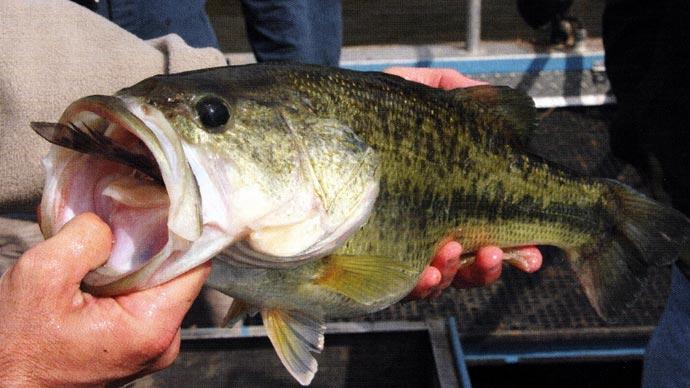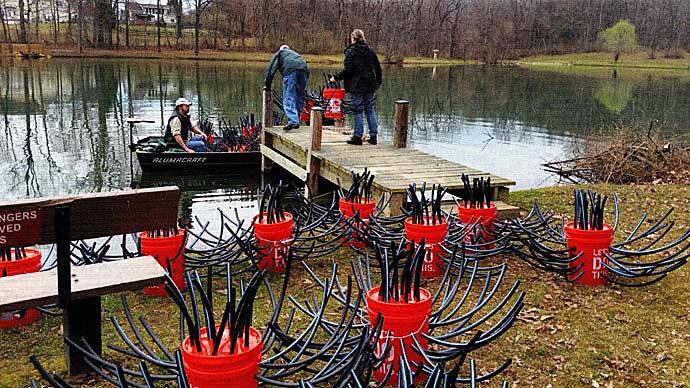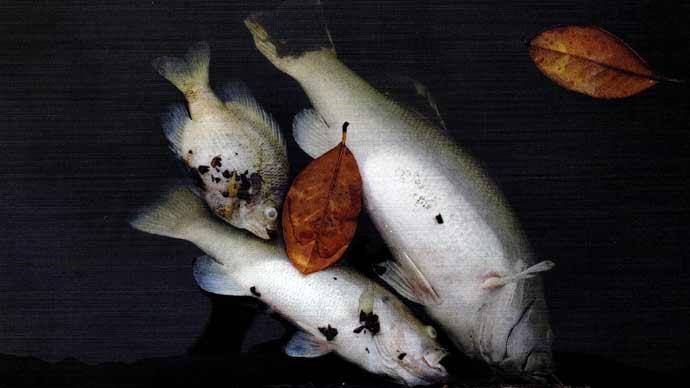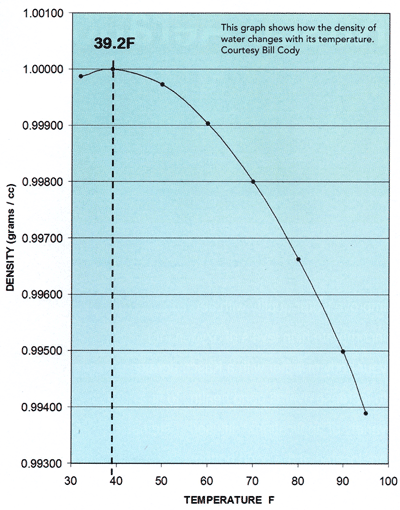
An amazing part of nature is that change is constant, but the patterns of change are often cyclical and predictable. For example, weather changes predictably with the seasons; winter is colder than summer, and Spring and Fall are less predictable, the weather reliably gets warmer or colder over time. Another noticeable, predictable change in day length. Days are shorter in winter than in summer. Additionally, many geographical regions have rainy and dry seasons. Weather and day length changes result from our Earth revolving around the Sun, so regions located farther north or south will experience bigger changes. In New York, winters can get well below zero, but during the summer, temperatures can go above 90 degrees, a range of about 100 degrees! Southern states like Texas or Florida may have less dramatic temperature differences. Still, there are seasons in every state in the U.S. Near the equator (middle of the planet), the seasons are not very noticeable, but there are minor changes there, too!
Did you know that lakes and ponds have seasons, too?
Like weather in general, the North experiences more change than Southern states, and changes are predictable over time. In northern states, rivers and ponds commonly freeze over with solid, thick ice during winter. Ice protects deeper water from the weather and wind when a pond or lake freezes over, so the water becomes very still. Often, snow will cover the ice, and the water environment will also get very dark. When a pond or lake gets still in the winter and freezes over, the water at the top of the pond is 32 degrees Fahrenheit (0° C) because that is the temperature at which water turns to ice. But water does a funny thing when it is cooling to freezing temperatures. Water that is 4 degrees C, or approximately 39 degrees F., is denser than any other water temperature. That means that as a pond or lake cools down to freeze over, the water will sink to the bottom as it cools down from 40° F to 39° F. Water that is colder than 39° F will be above the 39° F water and even stranger, solid water floats on liquid water, just like ice cubes float in a drink! This means that an iced-over pond or lake is 32° F at the top, with ice floating on it, and warmest at the bottom, 39° F. This is called winter stratification, and stratification means layers, and in the winter, the water is layered in a pond or lake, with the 39° F water at the bottom and the 32° F water at the top, like a layer cake!
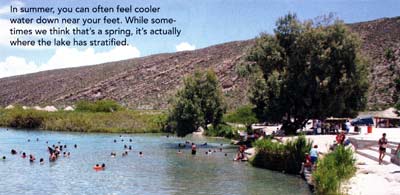
In the summer, a pond or lake can stratify the opposite way they would in the winter: warm water on the top—and cold water on the bottom. Remember that 39° F water is the water that sinks to the bottom? In the summer, the water closest to 39° F will be at the bottom, but there is no ice, and the Sun and wind warm the surface water. Thus, the surface water gets warmer and warmer, and the warmer the surface water gets, the less likely it will sink to the bottom. This is summer stratification, and it can be experienced firsthand by jumping off a dock into a pond during the summer and finding the pleasantly warm water at the surface suddenly gets cold 3 or 4 feet down.
In the Spring and Fall, stratified, or with temperature layers, ponds, and lakes do something called overturn...some call it turnover. Remember, warm water is at the bottom in winter, and cold water is at the top, but in summer, it's the opposite; warm water is at the top. When a pond or lake changes from summer to winter, the temperature layers must flip upside down or overturn. During Spring and Fall overturn, the temperature of lakes and ponds are uniform (the same) from bottom to top, and the layers disappear. Then, as the season goes on, the layers reform again in their new place. The wind is a big helper during overturn because it helps stir lakes and ponds and make temperatures the same from top to bottom, like nature's big mixing spoon!
So, what are lake and pond seasons?
Winter stratification, Spring overturn, Summer stratification, and Fall overturn. Not all ponds and lakes do this; of course, they are all individuals, and many other factors can affect the seasons' cycle of a lake or pond. However, cyclical change in ponds and lakes happens more noticeably in the northern half of the USA, where seasons are more dramatic, and it's interesting to think that lakes and ponds have their own unique seasons and that water can behave in such exciting ways!
Christine Cornwell is a horse trainer who lives in upstate New York with her husband and son. She worked for the New York State Department of Environmental Conservation and was a high school science teacher. Sharing her love of a healthy, natural world is a daily passion.
Reprinted with permission from Pond Boss Magazine

